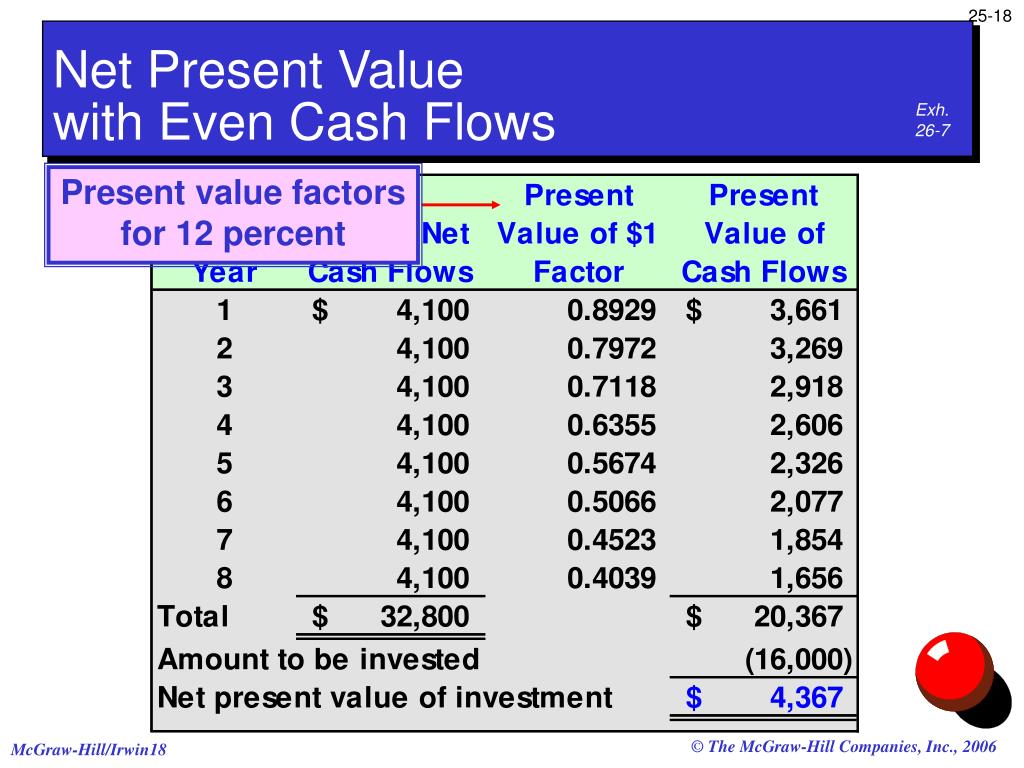

Sharon now knows how much more she can invest if needed and still achieve her goal of a 6.0% return.
/CalculatingPresentandFutureValueofAnnuities1-0cea56f3b4514e44bed8f45d9c74011e.png)
Finding present value with cashflows ror as rate plus#
Change the "Initial Investment" to $-215,248.61 ($210,000.00 plus the NPV result from above) and click "Calc" again. Yes! She can pay as much as $5,248.61 more and still earn a rate-of-return of 6.0%. Since the IRR equals 6.4%, Sharon will earn more than the 6% she desires.īut what if there is a competing bid for the mortgage? Click on "Add Series." Create 200 monthly entries of $1,682.77 starting on Oct.Set "Initial Investment Date." In this case, that's the date Sharon plans to purchase the mortgage.6% - the ROR she wants to earn on her investments. Enter Sharon's personal "Discount Rate" i.e.Enter -210,000.00 for the "Initial Investment.".Click "Reset" to clear entries in the cash flow table.Sharon wants to earn 6% on her investments. She can buy a mortgage for $210,000 that has 200 remaining monthly payments of $1,682.77 each. Sharon invests in already issued mortgages. If the NPV is positive, the investor can pay that amount more for the investment, and they'll still earn what they want to make. If the net present value is negative, the initial investment is too high for the investor to meet their goal ROR. The NPV is the calculation investors use to learn if they are paying too much for an investment (or if they could pay more) relative to the rate of return they want to earn. Wouldn't it be handy to have a tool to that tells you by how much you can raise your bid and still meet your investment objective? You can use the result to evaluate a single investment, or you can use it to compare investments.īut what if you are negotiating an investment? All other things being equal, the larger the result, the better the investment. As I've mentioned, you can use the NPV calculation to determine if you should invest.


 0 kommentar(er)
0 kommentar(er)
